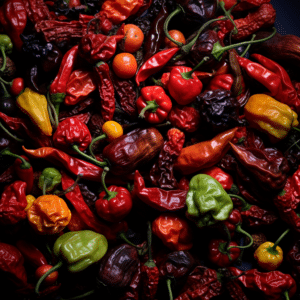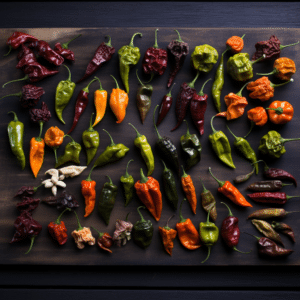
Which Is Hotter Mild Or Medium?
With different taste buds, people give different opinions on the heat in a meal. With this in mind, Wilbur Scoville derived an objective measure of capsaicinoid sensitivity experienced when people eat chilies. He came up with a scale known as the Scoville scale that uses a standard measure of unit (Scoville Heat Unit, SHU). According to this scale, there are 11 levels of heat, ranging from mild to extremely hot. The chili with the highest SHU ratings is said to be extremely hot, while those with low SHU ratings is mild. SHU ratings range between 0 to 3,000,000 + Scoville heat units.

Which Is Hotter Mild Or Medium?
Have you been to a restaurant and seen a meal on the menu that offers two choices, medium and mild, and you wondered what that means? When it comes to food, hot refers to the level of spiciness. In this case, the medium is hotter than mild. The difference between the heat in medium and mild spiciness is negligible. Taste is subjective, and no two people have the same taste buds. Meaning your interpretation of hotness may differ from another person’s view. Some people can tolerate heat better than others.
Is The Scoville Scale Reliable?
The first tests to be done were on humans. A taste tester would be given a pepper to eat, and then record what they felt the heat level was. The pepper was then changed, and the process was repeated until the taste tester recorded no heat. The limitation of this method is that people have different sensitivity to capsaicin, the chemical found in pepper. The results were therefore not objective. The taste buds can be affected by regular tasting; they become more tolerant with time. With time researchers have changed the methodology used and stopped using human tasters. The measure changed to focus on the alkaloids in a pepper tested in a lab. The scale is still in use and is reliable though the method of measurements has improved with time.
How To Determine Your Tolerance To Heat
To determine your tolerance level, you need to taste a spicy meal. Start with a mild option such as banana peppers and poblano peppers. If you realize you can handle a mild pepper, you can try a medium one, such as jalapenos. Your tolerance may increase with every meal. If a pepper gets so hot in your mouth, try a sip of cold milk or citrus juice to calm your taste buds.
How Do You Increase Tolerance?
Start small
Start with a small portion of a spicy meal and add as your tolerance increases. You don’t want to waste a large serving of a meal that you could not hold down. Sprinkle a little amount of your spice at the beginning.
Eat slowly
Savor the flavor. Eat slowly, taste buds get accustomed to the heat and can easily tolerate the taste. A Huge bite can cause a lot of sensation and may end up overwhelming your mouth and tongue with a burning sensation. Take small bites, and eat slowly.
Increase The Heat Progressively
The body has a way of increasing tolerance progressively. Start with a mild spice before graduating to medium, and eventually hot. As you continue adding the heat levels, the taste buds will signal to the brain that they can handle the heat. You can also try switching between hot and mild meals to increase tolerance.
Have A Coolant By Your Side
Most of us run for water when we experience a burning sensation from spicy food. The bad news is that capsaicin, the chemical found in chilies, is not a water solvent. What this means is that water won’t help cool the burning sensation. A glass of cold milk or yogurt and any other dairy product will work wonders on this sensation. Adding a spoonful of sour cream, coconut milk, cilantro, or lime into your dish may help in cutting down the heat. Lemon or orange juice or anything acidic can help cut the heat.
Have Some Spice By Your Table
Having a spice on your side during meals may make you want to use it. We are visual beings and will go for what we can see. If the food was spiced during cooking, have the spicy dish aside, and add as you get comfortable with the heat.
Do Not Force It
People are different, and so are their taste buds and tolerance levels. Meals such as Thai and Indian cuisines are hotter than the average dishes in the western, European, African, and most parts of the world. A person brought up in Thailand and India will be more tolerant of heat than most other people. If your buds can’t take the heat, relax. Do not force it.
Top 5 Hottest Peppers And Sauces In The World
Carolina Reaper is recognized in Guinness World records as the hottest pepper, with 2.2 million SHUs. The second on the list is the Trinidad Moruga scorpion (2.2 million SHUs). The third is Trinidad Scorpion “Batch T’ (1.4 million SHUs). Naga viper (1.4 million SHUs), and Ghost pepper (1 million SHUs) come in 4th and 5th respectively. The top five hottest sauces are; Mad dog 357 No. 9 Plutonium, The Source Hot Sauce, Get Bitten Black Mamba 6 Hot Sauce, Mad Dog 357 Pepper Extract, and Meet Your Maker Death sauce.

Mildest Peppers And Sauces
When it comes to the mild peppers and sauces, the range is wide. They are used in everyday meals and can be tolerated by the entire family. They include; Barbeque sauce, Ketchup, Banana peppers, Cherry peppers, Poblanos, cubanelles, and Anaheim peppers.
In conclusion, the medium is hotter than mild. To determine how hot a dish is, try a little amount and make your own decision. If you can’t handle the heat, don’t force it. Not everyone can enjoy the heat.